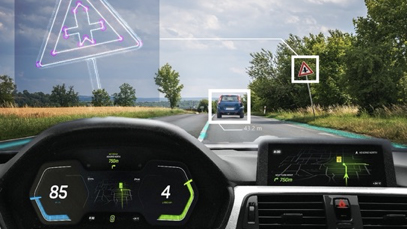
By Anu Halme, Head of Professional Services and Basemark’s Security Officer | November 10, 2020
 Software development being a very complex isn’t any big news to anyone. The industry standard to cope with the complexity is – and has been for many years already – agile development. Agile comes with many flavours but in Basemark’s automotive service projects it is the Scrum or Large Scale Scrum, LeSS.
Software development being a very complex isn’t any big news to anyone. The industry standard to cope with the complexity is – and has been for many years already – agile development. Agile comes with many flavours but in Basemark’s automotive service projects it is the Scrum or Large Scale Scrum, LeSS.
The Scrum framework in Basemark automotive service projects
The key in Scrum way of working is the dense and voluminous communication, everybody is communicating with everybody all the time but in a structured fashion. The Scrum framework gently forces all team members to think, plan, solve problems, communicate and document the work together. Great part of software development is not actual coding but joining daily scrum meetings, sprint plannings, backlog grooming sessions or various retrospectives. These meetings – online or face-to-face – ensure that both big and small topics and issues are discussed, and everybody’s voice is heard. I really like the basic assumption of the human nature in Scrum; in the underneath logic everyone is expected to be motivated and doing always his or her best. The scrum process is there to remove obstacles and blockers from the way.
The sprint structure of projects
Another useful feature is the sprint structure of a few weeks that creates always deadlines and keeps a certain feeling of emergency. Think about a student who will have a big test in ten months. When does she or he start feeling the pressure for that? Probably when the deadline gets closer. In Scrum projects, there is always a deadline upcoming but you learn fast to cope with them and don’t let them to paralyze you.
The beauty of Scrum is its short iterative workflow, which empowers the organization to cope with fast-paced market demand, especially in software industry. With the traditional waterfall development process, it could take years to release the product, but with agile framework it’s reduced to weeks which allows the product to adapt to the market quickly.
Small parts coming together into a complex ADAS algorithm
Basemark’s projects for the automotive industry are very confidential by nature but our skilful developers are working with C++ and the projects are related to either Autonomous and (Advanced Driving)Assistant System (ADAS) or to graphics handling in the cars, in various screens, gauges and projections.
 Paul Yeh, a C++ developer at Basemark has been very interested in autonomous driving and in deep learning already for years. Paul has been working in one big ADAS project for almost two years now and has found it fascinating, how tiny software parts from dozens of developers and extensive tests slowly come together and create a system that makes driving safer.
Paul Yeh, a C++ developer at Basemark has been very interested in autonomous driving and in deep learning already for years. Paul has been working in one big ADAS project for almost two years now and has found it fascinating, how tiny software parts from dozens of developers and extensive tests slowly come together and create a system that makes driving safer.
“I was quite junior when I started at Basemark but during this project, I learned both Large-Scale-Scrum as a method of agile working between many teams and how an ADAS algorithm based on C++ and Python is designed, developed and tested”.
“The journey has been both demanding and rewarding and I hope that on someday I can see such car on the street and can be sure that it will definitely not hit me when cycling in front of it.”, says Paul.
